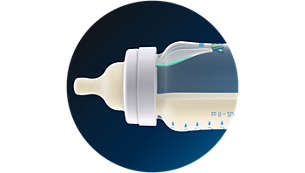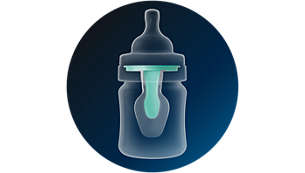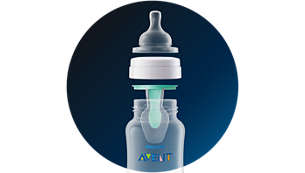

SCF411/01
Designed to reduce colic, gas and reflux*
Our unique AirFree vent is designed to help your baby swallow less air as they drink by keeping the nipple full of milk during feeding. Reducing the amount of air your baby ingests helps w/common feeding issues such as colic, reflux & gas.
See all benefitsUnfortunately this product is no longer available
If you're eligible for VAT relief on medical devices, you can claim it on this product. The VAT amount will be deducted from the price shown above. Look for full details in your shopping basket.
The nipple stays full even when the bottle is horizontal, so your baby can drink in an upright position. This can help reduce reflux, aid digestion, and make feeding time more comfortable for you and your little one.
Our unique AirFree vent is designed to help your baby swallow less air as they drink, by drawing air away from the nipple. Reducing the amount of air your baby ingests can help with common feeding issues, such as colic, reflux and gas.
The AirFree vent can be easily assembled with any Philips Avent Anti-colic bottle. And as the vent is one single piece, cleaning is a breeze.
While feeding, make sure the AirFree vent stays on top. This keeps the nipple full of milk, even when the bottle is held in a horizontal position, for easier upright feeding.
The Philips Avent AirFree vent is compatible with our 4oz / 125 ml, 9oz / 260 ml and 11oz / 330ml Philips Avent Anti-colic bottles.
AirFree™ vent
What is included
Ease of use
Functions
Development stages






